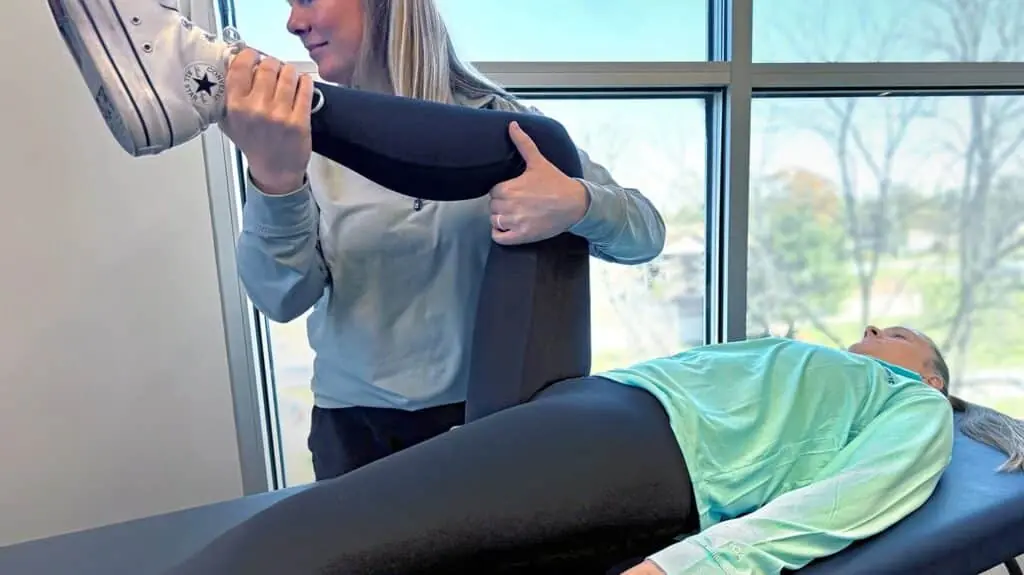What is Chronic Pain?
Chronic pain, a complex and often debilitating condition, can occur anywhere in the body given the myriad of processes that can prompt symptoms to advance. Addressing acute pain promptly is crucial to prevent its progression into chronic pain and minimize loss of function.
It remains a prevalent reason people seek healthcare in the United States, with approximately 20.9% of adults experiencing chronic pain and 6.9% suffering from severe chronic pain, according to the CDC. Notably, individuals living in poverty or lacking a high school education exhibit higher rates of chronic pain. While there are many treatment options available to manage chronic pain, physical therapy has emerged as a critical component in reducing chronic pain.
Chronic Pain vs Acute Pain
Simply put, chronic pain differs from acute pain because it lasts three months or more beyond the expected recovery period from an injury or condition. It can also occur as a part of a disorder associated with pain, such as arthritis and fibromyalgia.
Acute pain is perceived when your body’s alarm signals an immediate message that your body interprets as a threat to your environment, like when you touch a hot stove. An injury or illness typically causes acute pain and is usually short-term. A characteristic inflammatory response occurs after an acute injury. It is essential to note the best way to avoid the development of chronic pain is by treating acute pain well.
Physical therapy for acute pain will use an individualized program that may include exercises, manual therapy, and modalities like heat or ice to improve pain and mobility, restore function, and promote healing. Physical therapists (PTs) also educate patients who experience acute pain about pain processes, as research shows that they can help improve their pain response.
Recent research suggests persistent pain can happen for a variety of reasons. Persistent pain may be the result of a process called sensitization. The body has an alarm that is used to alert about pain and may continue to send a pain message after the threat is removed. Alternatively, inflammatory processes may persist and continue to contribute to symptoms. In other cases, research shows that sensory adaptations in the body or the brain can lead to persistent pain perception.
Chronic pain can occur anywhere in the body and impacts sleep tolerance, motivation, stress levels, and focus. As a result, people with chronic pain tend to rest this area of the body, take pain medications, and live in constant discomfort.
Chronic pain can impact recreation, work, and family life and can contribute to depression and anxiety. Research shows that there is even a link between days of struggling with mental health and days when chronic pain is the most intense. Chronic pain can lead to other health problems, like obesity, heart disease, and diabetes, due to fear of being active and making their pain worse. They also may be unable to work, which can add even more stress with financial troubles.
How a Physical Therapist Can Help with Chronic Pain
The body changes that lead to chronic pain require an individualized approach due to the unique features of this type of pain. A skilled physical therapist can create a treatment plan that will include exercises, manual therapy, modalities, and education on pain science. Your therapist will conduct a thorough assessment to determine the root cause of your chronic pain and how it impacts your daily life.
Whether you’re grappling with persistent back pain, recovering from a previous knee surgery or dealing with a stubborn ankle sprain, rest assured your PT is well-versed in your condition and equipped to help you get back to the life you love.
Prior to forming a treatment plan, your PT will listen to you carefully to understand your priorities surrounding your treatment. Together, you’ll work to achieve your movement goals with minimal discomfort. Additionally, your PT will help you find solutions to modify your tasks to help make them more manageable and less effortful. Improving function by making these tasks easier will also help you focus on activities in your day-to-day other than your pain.

Your tailored exercise plan will gradually improve muscle strength, flexibility and joint mobility, proven to reduce chronic pain in the long term. Manual Therapy techniques, such as massage and joint mobilizations, may also be employed to enhance movement quality and range of motion, which typically reduces pain. Your personalized exercise plan may feature exercises to improve blood flow and modifications to improve sleep tolerance, which are proven to improve chronic pain.
Educating patients about pain triggers and effective pain management strategies is integral to a physical therapist’s treatment plan for chronic pain. It’s imperative to understand that not all pain signals signify persistent injury or harm. Your PT will educate you about moving safely with chronic pain.
A treatment plan will also focus on restoring function and reducing limitations imposed by chronic pain by restoring flexibility, strength, and range of motion. Unlike opioids or invasive procedures, physical therapy offers a natural, non-invasive alternative for pain management. Its holistic approach addresses underlying causes and contributing factors, making it an effective solution for chronic pain sufferers.






